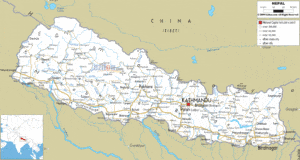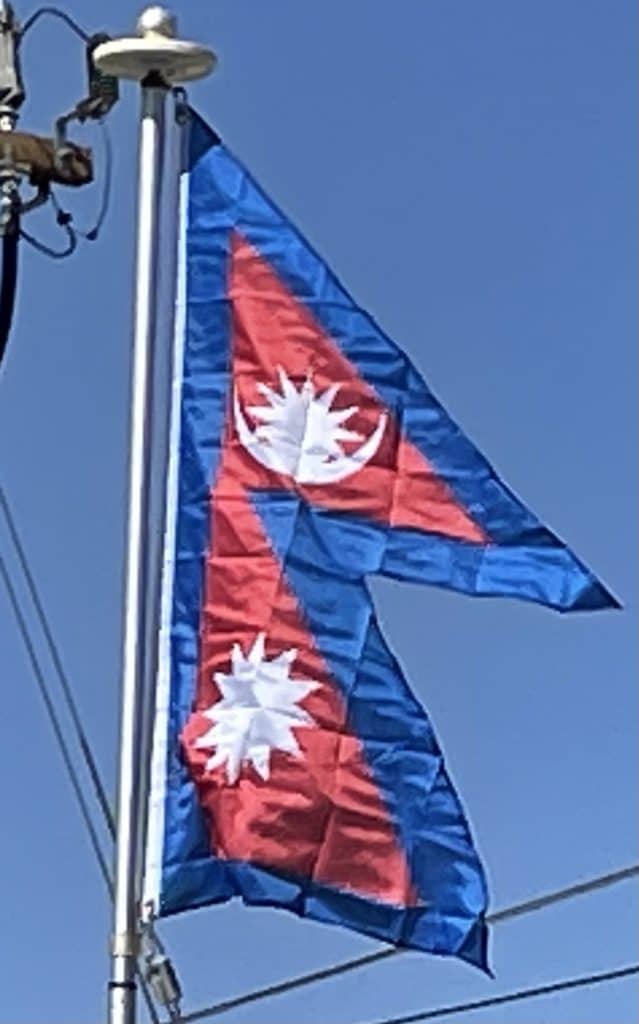
Nepal depends almost entirely on assistance from countries like China, India and Japan, for building, maintenance and expansion of the road network. The only practical seaport of entry for goods bound for Kathmandu is Kolkata in India. The national carrier, Nepal Airlines, is in poor shape due to mismanagement and corruption, and has been blacklisted by the EU. Internally, the poor state of development of the road system makes access to markets, schools, and health clinics a challenge.
Flag of Nepal:
The national flag of Nepal is the world’s only non-quadrilateral flag that acts as both the state flag and civil flag of a sovereign country. The flag is a simplified combination of two single pennons (or pennants), known as a double-pennon. Its crimson red is the symbol of bravery and it also represents the color of the rhododendron, Nepal’s national flower, while the blue border is the color of peace. Until 1962, the flag’s emblems, both the sun and the crescent moon, had human faces, but they were removed to modernize the flag.

The current flag was adopted on 16 December 1962, along with the formation of a new constitutional government. It borrows from the original, traditional design, used throughout the 19th and 20th centuries, and is a combination of the two individual pennons used by rival branches of the ruling dynasty.
After Prithvi Narayan Shah unified all small principalities of Nepal, the double-pennon flag was adopted. In modern times, the flag’s symbolism has evolved to incorporate several meanings. The crimson red indicates the bravery of Nepali people and is the country’s national color and the blue border represents peace and harmony. The colors are often found in Nepalese decoration and works of art. A theory is that the two points represented peace and hard work, using the symbols of the moon and sun respectively. Traditionally flag of Nepal is derived from Hinduism which is common in Hindu cultures. However, the modern and government-sanctioned representation is of Hinduism and Buddhism, the main religions of the country.
The inclusion of the celestial bodies indicates Nepal’s permanence and the hope that Nepal will enjoy the same longevity as the Sun and the Moon. The moon also symbolizes the cool weather of the Himalayas, whereas the sun symbolizes the heat and the high temperature of the southern lowlands (Terai). Additionally, the stylized moon represents the calm demeanor and purity of spirit of the Nepali people, while the stylized sun represents their fierce resolve.
During ancient times, the flags of almost all states in South Asia were triangular. Nepal has simply maintained its ancient tradition, while every other state has adopted a rectangular or square version in the European vexillological tradition.
